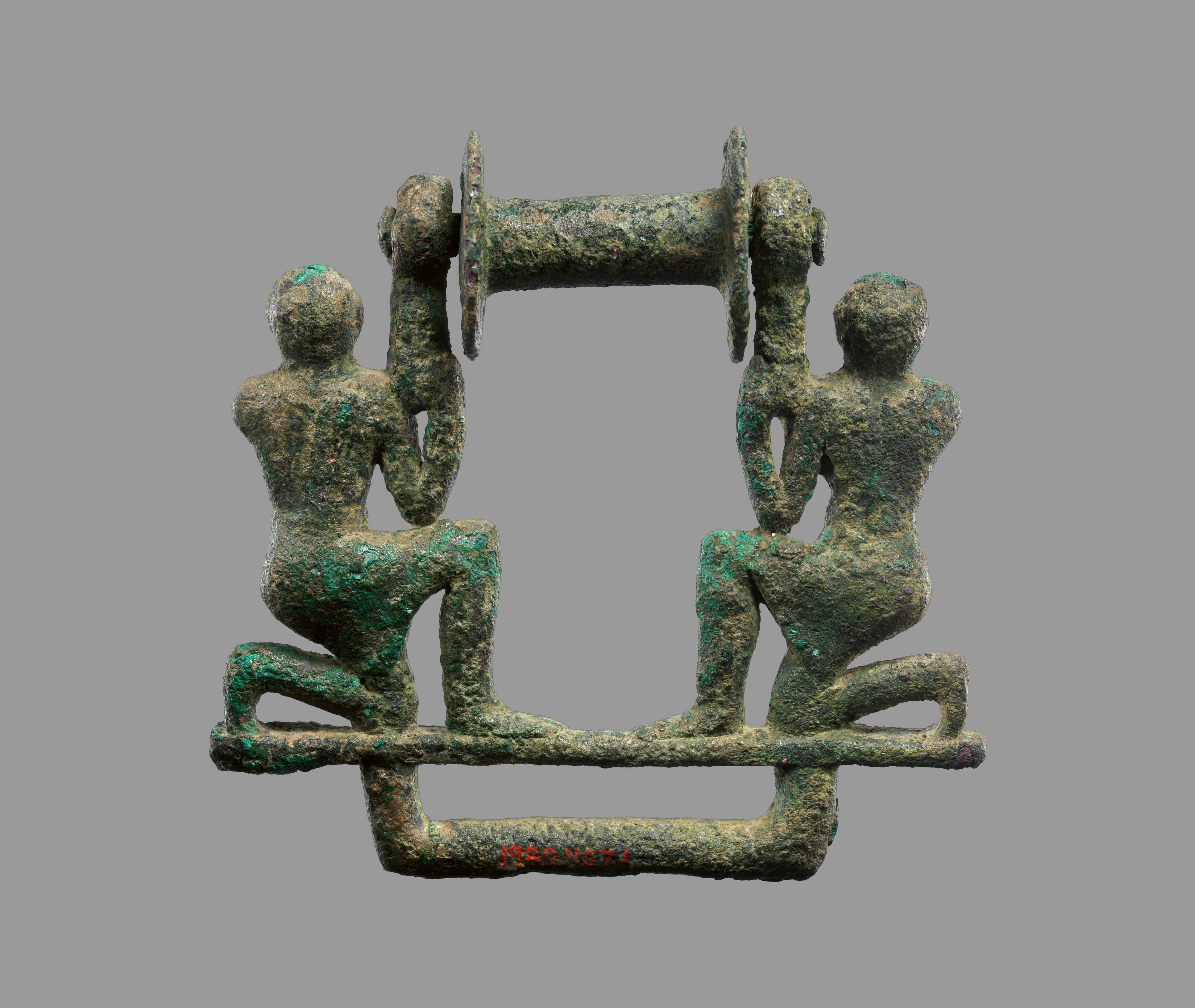Plaque with two male figures supporting a roller
Not on view
In this openwork bronze, two kneeling male figures grasp the terminals of a roller (comprised of two vertical elements, a pin, and a roller now immobilized by corrosion). This type of plaque is dated to the early second millennium B.C. largely on the basis of their imagery. Few provenanced plaques are known, but these objects appear to have been used from eastern Anatolia to western Iran – a reflection of the strong international connections of the period.
Although the precise function of bronze rollers remains unclear, the roller and the aperture at the bottom of this example suggest that it would have been used with a cord, strap, or fabric. The appearance of the two fully modeled male figures – shaved except for a forelock and wearing short belted kilts – may characterize them as temple attendants. It has been suggested that openwork bronzes may have been affiliated with the temple, used either in the production of textiles or as elements of temple furniture. Other proposals identify objects like this as horse trappings or belt buckles.
Due to rights restrictions, this image cannot be enlarged, viewed at full screen, or downloaded.
This artwork is meant to be viewed from right to left. Scroll left to view more.



